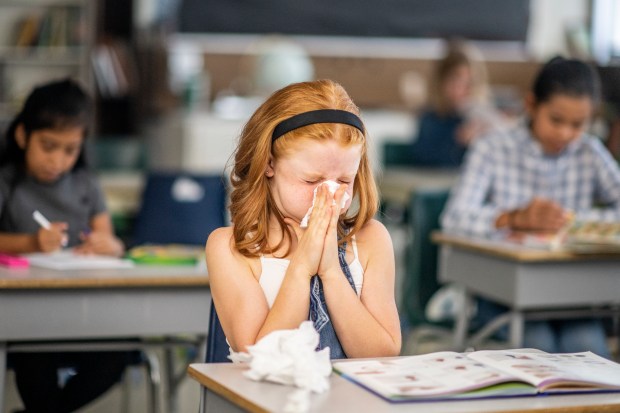WITH kids heading back to school soon, experts are urging parents to be aware of the heightened risk of head lice.
As Superdrug warns parents to expect a sharp rise in cases next month and to speak to a pharmacist.
Headlice Alert
Head lice are common in young children and families, and are passed on through head-to-head contact, not dirty hair.
A common way to treat them is through medicated lotions and sprays, which can be purchased from pharmacies, supermarkets or online.
And the healthcare retailer has reportedly seen sales of its head lice treatment spray jump by 21.2% in recent weeks as the summer holiday comes to an end.
The surge highlights the seasonal spike that happens every year as children return to classrooms.
The back-to-school period and the rise in social events such as sleepovers, creates the ideal setting for lice to easily spread.
September is even recognised as National Head Lice Prevention Month by the National Pediculosis Association (NPA).
But, Niamh McMillan, Superdrug’s Pharmacy Superintendent, said: “Back to school doesn’t have to mean back to head lice.”
The warning signs
Head lice are tiny insects that live in the hair and lay their eggs close to the scalp.
Nits are the empty egg cases attached to hair that head lice hatch from.
Headlice are most common among children aged four to twelve but anyone can get them.
Itching is the most prevalent symptom and is triggered by bites from lice but it might not occur right away, particularly during a first-time infestation.
A tickling feeling or the sensation of something crawling in the hair can also suggest there is lice.
Severe itching can lead to scratching, which may cause red bumps, sores, or a rash on the scalp, neck, or behind the ears.
Actual live lice are small, roughly the size of a sesame seed, and typically appear whitish or grey-brown.
The most common back-to-school bugs to watch out for

As children flood back into school classrooms over the coming weeks, this provides ample opportunity for them to pick up and spread nasty bugs.
Pharmacist Thorrun Govind told the Sun: “There is often lots of hugging and playing between friends they haven’t seen all summer – and all that close contact means bugs can easily spread.
“They also tend to cough and sneeze without covering their mouths and don’t always wash their hands without parental supervision.”
Here are the most common bugs to watch out for in your tots:
- The common cold
- Respiratory syncytial virus (RSV)
- Flu
- Covid-19
- Scarlet fever
- Norovirus
- Measles
- Whooping cough
Read more on each bug’s symptoms and how to prevent them here.
They move swiftly and tend to avoid light, making them difficult to detect.
The eggs laid by lice are tiny, whitish or yellow spots that cling to the hair shafts.
Nits are most commonly found around the ears and at the nape of the neck. Unlike dandruff, nits cannot be easily brushed out.
Reducing the spread of lice
Niamh said: “If you suspect your child has head lice, then the first step is to inspect their head.”
She added: “You should only begin head lice treatment once you have spotted lice in their hair,” reports The Mail.
However to prevent your child from catching or spreading head lice, regularly examine your child’s hair.
Don’t share personal belongings such as hats, combs, and hairbrushes and make sure long hair is tied back in braids to reduce the chance of contact.
The NHS recommends ‘wet combing’ to remove lice using a special fine-toothed comb that can be bought online or from pharmacies.
If you do find lice, treat them promptly and notify anyone who may have been in contact with the infested person.
Alternatively, you can use lice treatment, which can help kill present head lice and eggs in the hair.
You usually need to apply the treatment liberally to the hair and leave it for two minutes before washing it out.
Niamh said: “If treatment hasn’t worked, speak to a pharmacist, who will be able to advise on different treatment options available.”













